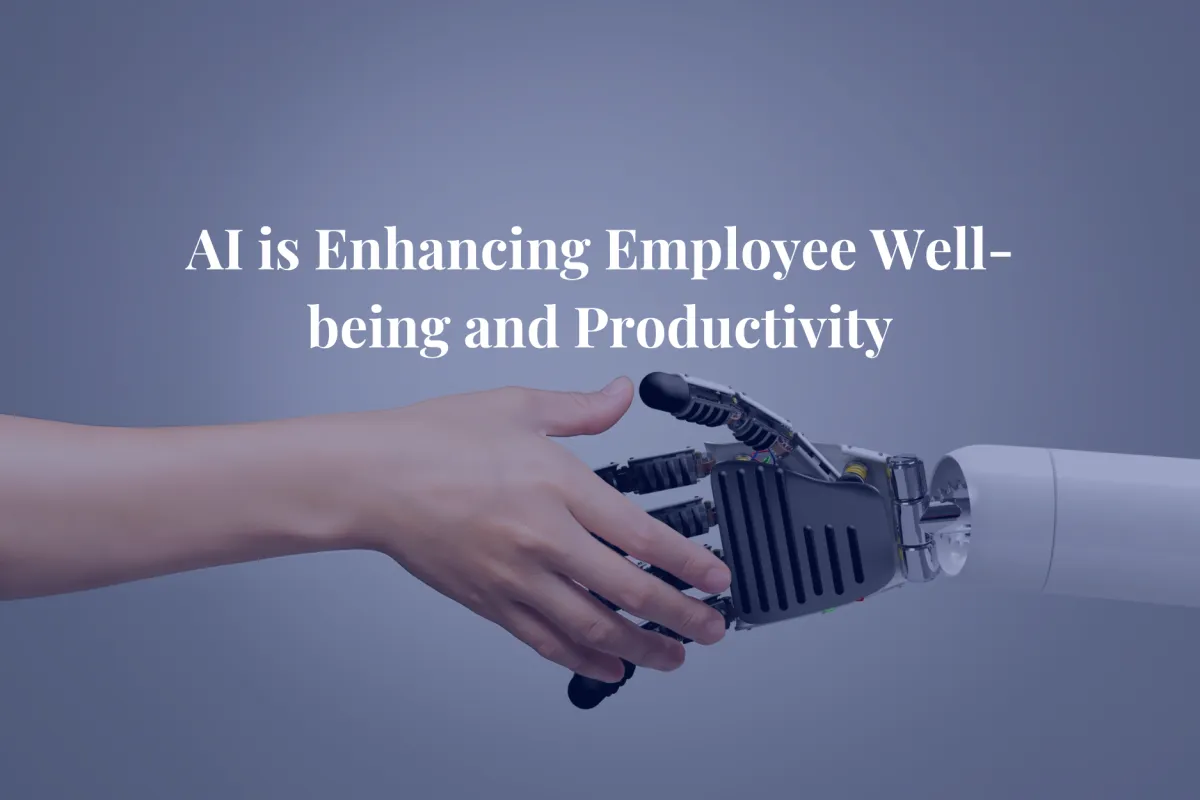
AI is Enhancing Employee Well-being and Productivity
In today’s fast-paced work environment, employee well-being has become a critical focus for businesses aiming to improve productivity and retain top talent. While traditional wellness programs have focused on physical health and work-life balance, the integration of Artificial Intelligence (AI) into the workplace has opened up new opportunities for fostering a healthier and more productive workforce. From reducing burnout to enhancing personalized employee support, AI is transforming the way companies approach well-being. Here’s how AI is playing a pivotal role in boosting both employee well-being and productivity.
1. Reducing Repetitive and Stress-Inducing Tasks
One of the most significant benefits of AI is its ability to automate routine and repetitive tasks. Administrative work, data entry, scheduling, and customer service inquiries—these can often be mentally exhausting and time-consuming for employees. By utilizing AI tools to handle these tasks, companies are not only improving operational efficiency but also freeing up valuable time for employees to focus on more creative and strategic work. This shift leads to a reduction in stress levels, which contributes directly to an improvement in employee well-being.
For example, AI-driven chatbots can take over customer service inquiries, while AI-based project management tools can automate scheduling and task allocation. This enables employees to spend more time on high-impact activities and reduces the pressure of mundane, repetitive work.
2. Personalizing Employee Support
AI can enhance personalized employee experiences, offering tailored solutions for both professional development and well-being. AI tools can analyze an employee’s work patterns, stress levels, and feedback to provide targeted interventions. For instance, AI-powered platforms can suggest wellness programs based on an employee’s health data, recommend learning and development opportunities based on their career trajectory, or even guide them through a more effective work-life balance.
Additionally, AI can act as a coach for employees by providing real-time feedback and offering suggestions for improving productivity. Personalized feedback systems that are powered by AI can help employees address challenges in real time, thereby avoiding the buildup of stress and frustration that often leads to burnout.
3. Predicting and Preventing Burnout
Burnout is a growing issue in many industries, especially for employees in high-pressure environments. One of the most effective ways AI is improving employee well-being is by predicting and helping prevent burnout. By monitoring employees' workloads, stress levels, and work patterns through AI tools, companies can get a clear picture of which individuals may be at risk of burnout.
AI can track behavioral patterns such as the number of hours worked, the frequency of overtime, and emotional indicators (e.g., decreased engagement or performance) to alert managers to potential issues. By identifying early signs of burnout, businesses can step in with proactive solutions, such as redistributing workloads, offering mental health support, or even simply encouraging employees to take time off. Early intervention prevents long-term negative consequences, fostering a healthier and more resilient workforce.
4. Enhancing Mental Health Support
AI is also being used to provide mental health support in the workplace. While human resources departments may not always be equipped to offer immediate mental health assistance, AI-driven applications can offer employees real-time, anonymous support through chatbots and virtual therapists. These AI systems can offer coping strategies for stress, anxiety, and depression, while also guiding employees through breathing exercises, mindfulness practices, and other mental health activities.
AI-driven platforms like mental health apps (e.g., Woebot) have become increasingly popular, offering employees a convenient and private way to access mental health support. These tools can supplement traditional employee assistance programs (EAPs) and provide support when employees may be too overwhelmed to seek help directly.
5. Promoting a Healthy Work-Life Balance
AI can also support work-life balance, a critical aspect of employee well-being. With the help of AI, employees can gain better control over their work schedules. Smart scheduling tools, powered by AI, can optimize meeting times, allocate time for focused work, and even encourage breaks to ensure employees are not overworked. These tools can take into account an individual’s preferences, productivity rhythms, and team dynamics to suggest ideal work schedules that maximize both efficiency and personal time.
Moreover, AI can help prevent overloading employees with tasks by identifying when workloads are becoming unsustainable. For instance, an AI system might flag when a particular employee is being assigned too many high-priority projects and recommend adjustments to prevent excessive stress.
6. Fostering Collaboration and Communication
AI tools also play a crucial role in improving collaboration and communication among teams, contributing to a more cohesive and supportive work environment. AI-powered collaboration platforms can help teams work smarter by automating project updates, reminders, and task handoffs. This reduces confusion and helps employees feel more organized and in control of their workload, which in turn boosts their confidence and reduces work-related anxiety.
Additionally, AI can facilitate more inclusive and effective communication by offering language translation and sentiment analysis tools, allowing diverse teams to communicate better and understand each other’s needs. This fosters a sense of belonging and reduces the isolation that can sometimes affect remote or hybrid workers.
Conclusion
AI is revolutionizing the way companies approach employee well-being and productivity. By reducing repetitive tasks, personalizing support, predicting burnout, enhancing mental health resources, promoting work-life balance, and fostering communication, AI is empowering employees to work smarter, not harder. As organizations continue to integrate AI tools into their operations, they’re not only boosting their bottom line but also creating healthier, more balanced work environments that prioritize the well-being of their most valuable asset—their employees.
Embracing AI to enhance employee well-being isn't just a business strategy; it’s a vital investment in the future of work, where both productivity and people can thrive together.
